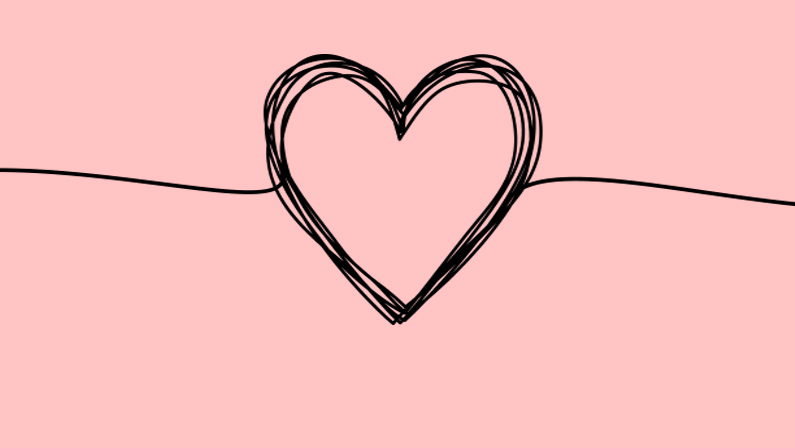William Butler Yeats wrote one of my favorite love poems of all time. It’s called “A Drinking Song,” and it’s only six lines long:
Wine comes in at the mouth
And love comes in at the eye;
That’s all we shall know for truth
Before we grow old and die.
I lift the glass to my mouth,
I look at you, and I sigh.
Yeats had a complicated love life, to put it mildly. For a long time, he pined for Maude Gonne, whose feelings were not mutual. They were ‘just friends,’ so to speak. Time passed. Yeats accepted that it was not meant to be.
So, he asked Gonne’s daughter to marry him. She declined.
Write your own meditation on love
You don’t need a dramatic love life to write something lovely. And you don’t need a Nobel Prize to compose something special for a special someone. (It doesn’t have to be a poem.)
With Valentine’s Day soon upon us, I thought I’d share some strategies for writing your own meditation on love, something to share with a person who means a lot to you.
Before the how, here’s the why:
Flowers fade. Chocolates melt. Conversations over dinner at too-crowded and too-loud restaurants are soon forgotten. Writing down your feelings is expresses how much you care. It’s a gesture that lasts.
Generate raw material with these writing exercises
“You like potato and I like potahto.
You like tomato, and I like tomahto;
Potato, potahto, tomato, tomahto!
Let’s call the whole thing off”
When Fred Astaire and Ginger Rogers sing this famous duet in “Shall We Dance”, they rely on ‘contrast’ to formally introduce their tongue-in-cheek arguments for breaking up or staying together.
Contrast is a reliable, well-worn rhetorical strategy that gets as much utility in politics and stand-up comedy as poetry. Dogs and cats. Mars and Venus. Liberals and Conservatives. You and I. Where is the contrast? What are the distinctions?
You need raw material to write a love note. Exploring contrast and complements is one method for getting started.
- Start with an ‘I’ statement, followed by a ‘You’ statement. Do this as a writing exercise and generate more material than you need.
Be serious and silly. Be literal and figurative. Work in a few ‘We’ statements where you can. Flip the order and go from “You” statement to “I” statement.
Examples:
- I never eat breakfast. You never miss a meal.
- I pass the ball. You shoot and score.
- I like TV. You like to read.
- I am loud. You are quiet.
- I am impulsive. You are patient.
- I make the bed. We mess it up again.
Finish this statement: My feelings for you are like …
Similes are an underrated writing device in personal and business communication. Poems make use of them all the time. Give yourself permission to write like a poet by completing this writing exercise.
- First, make a new document with two columns. Or take a piece a paper and draw a line down the middle.
- In one column, write every word you associate with love.
- In the other, make a list of words, objects, images and memories that you associate with person with whom you’ll share this meditation.
- Drawing from your list, finish this statement: My feelings for you are like …
- Spend five minutes writing about why the simile is true.
An (Unedited) Example
My feelings for you are like a road trip to the beach. The destination is a given, but there are always suprises along the way. They’re like a road trip to the beach because road trips are relaxing. I like spending time alone with you. I’m thinking of a specific beach, where the weather is warm. I have warm feelings for you. Ocean waves are powerful. My feelings for you are powerful. They’re like ocean waves. My feelings for you are like being on a beach at night.
Is this bad? Yes, it’s bad. It’s raw material. It’s going to be bad.
It doesn’t matter if you’re writing a Valentine’s Day message or a 40-page report. A first draft is generally not the last draft.
So how do you get from rather uninspiring raw material to a finished text?
You rewrite and revise. Then you rewrite and revise again.
This is what a poem looks like after it has been revised a dozen or more times:
Sommelier of the dark sea,
pass the drink to me –
I tilt the heavy bottle,
lift its sand-skirted
bottom to the moon,
drain its delightful contents,
lick my wet lips, swoon.
(Can you feel me channeling Yeats here?)
Hints for composing your Valentine’s Day message
It’s time to turn your raw material into a polished meditation. Here’s some advice to consider as you revise:
Set some (arbitrary) limits. Write a message or a poem that’s no more or less than 10 lines. Or 4 lines. Or two lines. Whatever you decide, constraints help you shape the text. If you don’t like the shape later, you can revise.
Address the person directly. Since a particular someone prompted you to write, why not make it explicit? Try opening your message with “To XXX.”
What to avoid / Signs of a half-baked love message
- Avoid clichés.
- Avoid sentimentality.
- Avoid turning your subject into an object. People aren’t landscapes. They aren’t sculptures in a garden or dolls, etc.
- Avoid phrases that would sound troubling if a stranger overheard them: “I love you more than life itself” or “I’d die without your love.”
###

